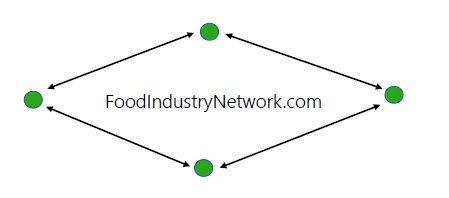India gears up for a potential trade deal as Trump targets China, say government sources

New Delhi | Reuters — India is preparing to offer tariffs cuts on some farm and other goods mainly imported from the U.S., aiming to clinch a broader trade and investment deal once president-elect Donald Trump takes charge, government and industry sources in New Delhi said.
To tackle Trump’s threat of a “reciprocal tax” on Indian goods for high tariffs, some officials of the Indian commerce ministry are ready to consider cuts on certain products such as pork, a senior government source said. Currently India slaps about a 45 per cent import tariff on pork, which is mostly supplied by the U.S.
Read Also


Feed Grains Weekly: Trump looms over Prairie feed market
Currently, United States President-elect Donald Trump is more of an influence on Western Canadian feed grain prices than a weaker Canadian dollar said Brandon Motz of CorNine Commodities in Lacombe, Alta.
Tariffs could also be reduced on high-end medical devices such as pace makers and luxury motor-cycles, including Harley Davidson, said a second official with direct knowledge of trade issues, citing the 25 per cent to 60 per cent tariffs on these products.
With bilateral trade between India and the U.S. exceeding $118 billion (C$169.6 billion) in the 2023/24 fiscal year ending in March, and India enjoying a $32 billion (C$45.0 billion) trade surplus, the country is readying for trade talks with the U.S., aiming to clinch a broader trade and investment deal once president-elect Donald Trump takes office.
To address Trump’s concerns over the trade imbalance, officials have also proposed buying more LNG and defence equipment from the U.S., the second official said.
India’s energy imports from the U.S., including crude oil, refined fuel and coal, were estimated at $12 billion (C$17.2 billion) in fiscal 2024, and aircraft and parts at $2 billion (C$2.9 billion). Such imports could rise by $5 billion to $10 billion ($C14.4) annually, a third government source, said.
The government and industry sources spoke on condition of anonymity because the discussions remain confidential.
A commerce ministry spokesman declined to comment.
Commerce ministry officials have previously said they would wait for the Trump administration to take office before any offer of trade talks, while working out plans for possible negotiations.
Indian officials are also sensing an opportunity in Trump’s plans to impose up to 60 per cent tariffs on Chinese imports, by pitching India as an alternative manufacturing base.
The government has held consultations on the issue within ministries, as well as with local think-tanks and industrial groups, said a government source who attended some of the meetings.
Trump good for India
“That is an opportunity,” said Arvind Virmani, a government adviser and member of the state-run policy think-tank NITI Aayog.
“It is in the interest of the U.S. and India that more of critical manufacturing or the sensitive manufacturing be done in India rather than China,” he said, adding a “preferential trade cum investment deal,” which is more ambitious than an earlier proposed mini-trade deal, would benefit both countries.
Ajay Sahai, director general at the Federation of Indian Export Organisations, said high tariffs on goods from China would accelerate the process of global companies moving to India.
“We have to do our homework… Overall the coming of Donald Trump is definitely good for India,” he said.
During Trump’s first term, a proposed mini-trade deal aimed at addressing trade imbalances and strengthening trade ties through limited agreements faltered over disagreements on tariffs, market access and intellectual property.
India is now seeking a broader deal, offering significant concessions including production-linked incentives for shipping and support for logistics companies.
“Under Trump’s ‘Make in America program’, India could extend concessions for U.S. companies for manufacturing low-end products in India for their supply chains,” said Ram Singh, a trade analyst at the state-run Indian Institute of Foreign Trade.
In the semiconductor sector, for instance, he said, India could become a hub for the production of low-end chips as part of the global supply chain while U.S. companies focused on high-end products.
Noting that India has attracted investments, such as Apple Inc’s iPhone production, the sources said the government plans to offer further incentives in sectors like aircraft maintenance, semiconductors, electronics and renewables.
India also plans to allow 100 per cent foreign direct investment in the insurance sector, up from the current 74 per cent in a move that could help leading US insurers like AIG.
The plan would require parliament approval.
— Additional reporting by Shivangi Acharya
Source: Farmtario.com

